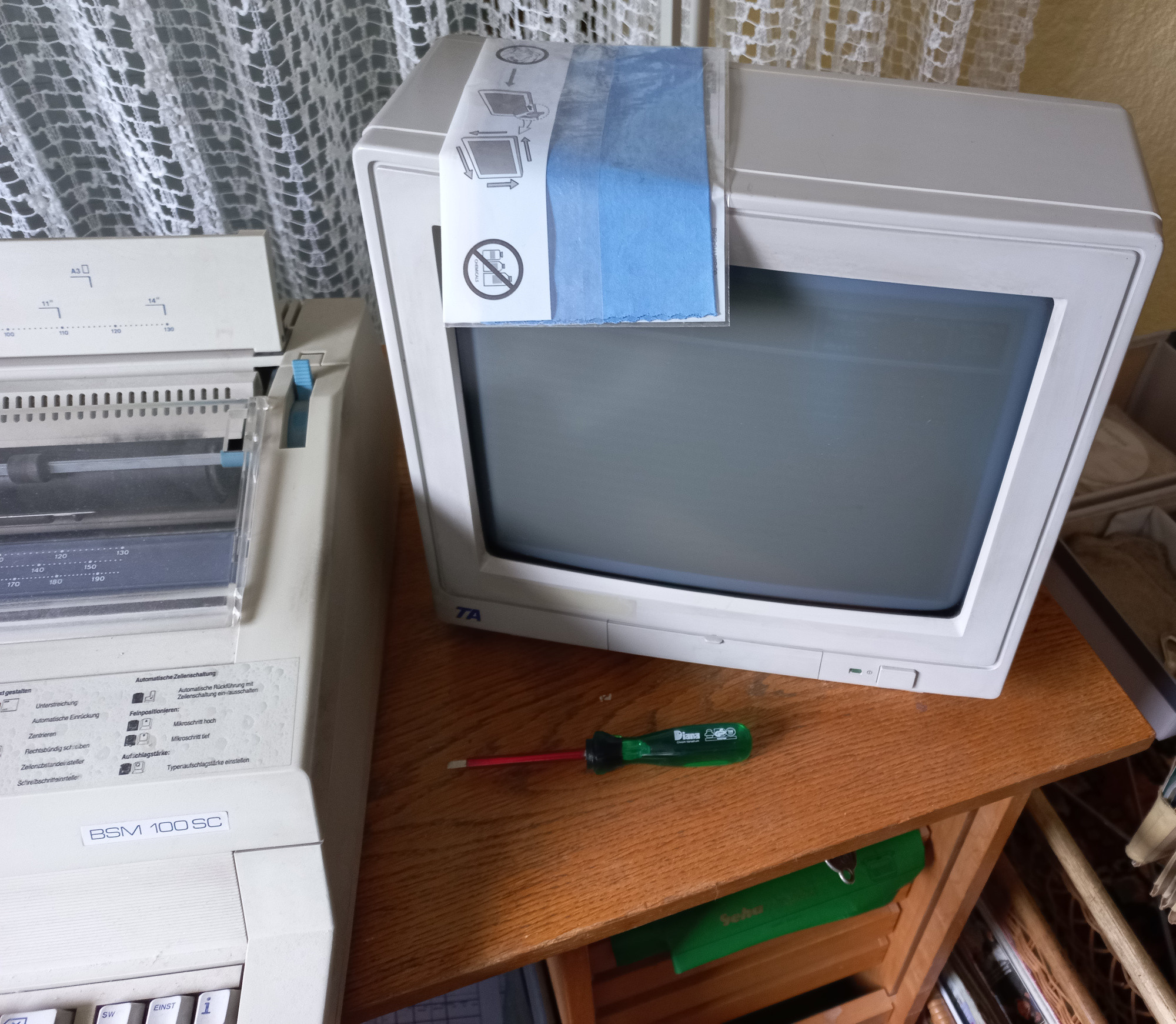A friend of mine has an electrical typewriter Triumph-Adler BSM 100 SC which is roughly from 1982 (as this site says).
The original tube monitor is faded and it's hard to read anything.
The VGA video cable coming from the monitor must be monochrome VGA. Because it's missing pins 1 and 3 but not 2. Pin 2 is used for monochrome video and this is documented only on German Wikipedia and missing on English Wikipedia. Because German Wikipedia says VGA is from 1987 I am not sure if it's VGA at all (the typewriter is from 1982). Maybe it only has the same connector.
We want to replace the monitor with a brand new flat screen.
How can this be done? I don't want a shopping recommendation. I just want to know how this can generally be done.
I searched for monochrome VGA adapters but didn't find anything. Also I don't know if modern VGA monitors support monochrome. I don't want to connect a normal VGA monitor because it could damage the typewriter and/or monitor.

